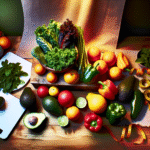A mum and daughter sold their Ye Traditions homemade red rice wine on Carousell as an experiment and it became a hit As part of their heritage, the Yap family made red rice wine in their kitchen for decades and enjoyed it at every celebration. Wondering if there were others who loved it as much, they casually offered it on Carousell, calling it Ye Traditions. The outpouring of memories it elicited surprised them. It all started because of a passing remark Yap Jinyen made on her birthday in 2019. The millennial was enjoying the red rice wine brewed by her mother Yap Joo Eng – a hallowed family tradition for generations – when she wondered out loud if brewing rice wine was a “disappearing art”. “It’s so labour intensive! Are people going to continue to brew it? Are there people out there looking for it,” she mulled. Her mother shared her sentiments. And off the cuff, the duo decided to try selling homemade red rice wine on Carousell that year. They called the business Ye Traditions, incorporating the family surname. The elder Yap is a 60-year-old retired accountant while her daughter is a 31-year-old tech professional. It was never their intention to start a home business selling red rice wine – in fact, they did not expect many people to buy it. But their Carousell post had a life of its own. Orders grew to 100 bottles a month and the duo found themselves starting a pre-order system because they were not able to produce their red rice wine fast enough. The business steadily grew, as did their product offerings. They added their Hakka yellow rice wine in 2021, and ginger rice wine in 2023. Online orders for these rice wines quickly grew to more than 500 bottles each month in total. They also added other traditional products such as red rice lees (a residual product of fermenting red rice wine) and fermented glutinous rice wine (unfiltered rice wine with visible rice bits) used to make traditional dishes, as well as Hakka cooked dishes such as red rice wine chicken soup and Hakka wine chicken. Wanting to make these traditional products more accessible to seniors, the mother-daughter pair plan to open a shop in Ang Mo Kio in the second quarter of the year. THE TASTE OF NOSTALGIA The organic growth of orders for red rice wine by an unknown brand on Carousell was quite remarkable. But that was not the reason that mother and daughter decided to start the business. It’s so labour intensive! Are people going to continue to brew it? Are there people out there looking for it. Jinyen recalled a pivotal moment when one of their first customers came to their house to thank them. “He said he wanted to replicate a dish for his family but no one knew how to make red rice wine anymore. He also said our red rice wine reminded him of his grandmother,” said Jinyen. “My mother had goosebumps and I saw her tearing up.” This resonated with Jinyen and her mother because red rice wine also reminds the latter of her late mother-in-law. The first generation Yaps came to Singapore from Fuzhou, China, where red rice wine is a staple and a celebratory food. In 1983, when her grandfather passed away, her grandmother, who was doing odd jobs then, relied on bartering her homemade rice wine for rice, oil and other essentials to support her teenage children, Jinyen told CNA Women. Joo Eng recalled how she was first introduced to red rice wine during her first meal with her mother-in-law. “I had never had red rice wine chicken before, and I was blown away. The chicken was so fragrant and tasted fantastic,” she said. Her mother-in-law passed on the family recipe to her, and she continued to brew red rice wine and make red rice dishes for her four children, even after her mother-in-law passed away in 2004. “I started consuming rice wine in cooked food when I was a year old. I am told that as a child I drank bowl after bowl of red rice wine chicken soup,” Jinyen laughed. “My siblings were all raised the same way. We always have red rice wine at every birthday and every celebration.” A SUPERFOOD AND STAPLE When you mention red rice wine, most people immediately associate it with confinement cooking. “Red rice yeast is believed to improve blood circulation, according to traditional Chinese medicine,” explained Jinyen. However, Joo Eng noted that it is a misconception that rice wine should only be used for confinement. “Rice wine has lactic acid which is very good for digestion. It can replace hua tiao wine, which has salt content, as well soya sauce and salt to bring out the taste of your meat and vegetables when cooking,” Joo Eng said. Jinyen added that while most millennial women come to know about red rice wine during confinement, many continue using it in their cooking after. In the Yap family, rice wine is a significant part of their culinary culture. “Even when we dabao (take away) fish soup, we add rice wine to it to elevate the taste,” laughed Joo Eng, who added that the family consumes five bottles of rice wine each month, on average. They also drink red and yellow rice wine on its own, with ice. “Yellow rice wine has a light, gentle fragrance that is smooth, sweet and not heavy on the tongue. Red rice wine tastes stronger and lingers for longer. Both have an alcohol content of around 15 per cent,” said Jinyen. SHARING THEIR FAMILY HERITAGE It is a culinary tradition that the Yaps love and want to share. However, it is no mean feat to make 500 bottles of different types of rice wine out of a home kitchen each month. Joo Eng uses the largest home-use steamer she could find – a 40cm steamer that cooks 15kg of glutinous rice each time. Each 100kg batch of rice takes her around two days to cook. First, she sterilises everything, including the steamer, ladle and urn. After measuring and washing the rice several times, she places it in the steamer in a way that ensures every grain is cooked evenly, and stirs and checks it periodically. After steaming, the rice is laid on the table to cool and sprinkled with red rice yeast before it is placed in the urn with water and left to ferment for around 30 to 40 days, then bottled for consumption. “The rice wine ferments more quickly when the weather is hotter and takes longer when it rains a lot. So each batch will taste slightly different because of weather and humidity changes,” said Jinyen. The Yaps recommend that their wine be consumed within a year, although it can be kept for longer in a cool, dark place away from sunlight. “The longest batch we’ve kept was for five years. But because it is a fermented product, the longer you keep it, the stronger the taste. Some people may not be used to a very strong taste. I am used to it because I grew up drinking it,” said Jinyen. Joo Eng takes on most of the production because she is retired, and Jinyen takes care of marketing, social media and logistics, and helps out with production at weekends while juggling a full-time job. Working together has brought mother and daughter closer. “I’m not a very patient person. But doing this with my mum has taught me the value of patience because this is not a trade where I can take shortcuts. You have to pay attention to details and do it with love,” said Jinyen. The business has also deepened their appreciation for their heritage and family. “My family loves celebrating together. We make our own dumplings for dragon boat festival, or come together on mid-autumn festival to solve riddles on lanterns and enjoy mooncakes. We always have rice wine at celebrations – food is just one way for our extended family to come together,” Jinyen said. Gathering and remembering their roots is important for the Yaps. “All our grandparents came from somewhere. And they brought with them all these traditions. Why is it that we move so quickly that we forget our roots and the culture that makes us who we are?” Jinyen reflected. The duo hopes their rice wine helps others remember their culture and loved ones too. “Many of our customers have told us that our rice wine reminds them of beloved grandparents and grand-aunts. We made our rice wine to replicate the experience for people who have such memories,” said Joo Eng. CNA Women is a section on CNA Lifestyle that seeks to inform, empower and inspire the modern woman. If you have women-related news, issues and ideas to share with us, email CNAWomen [at] mediacorp.com.sg.
This content was originally published here.


















